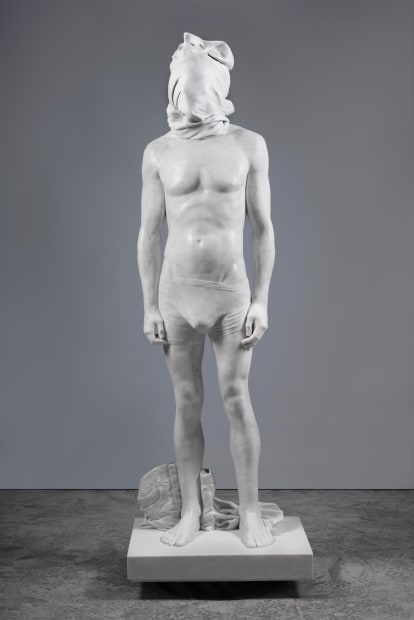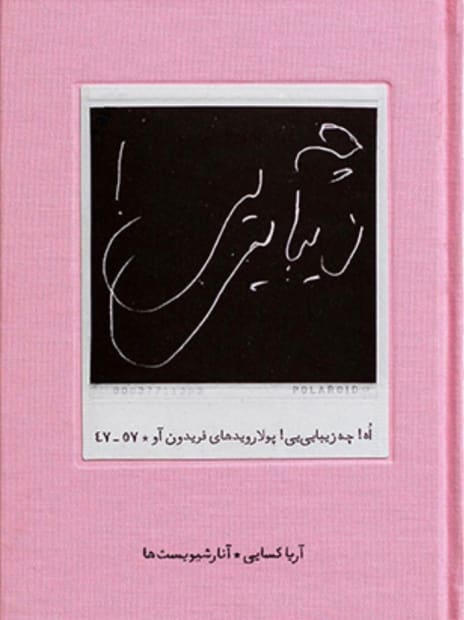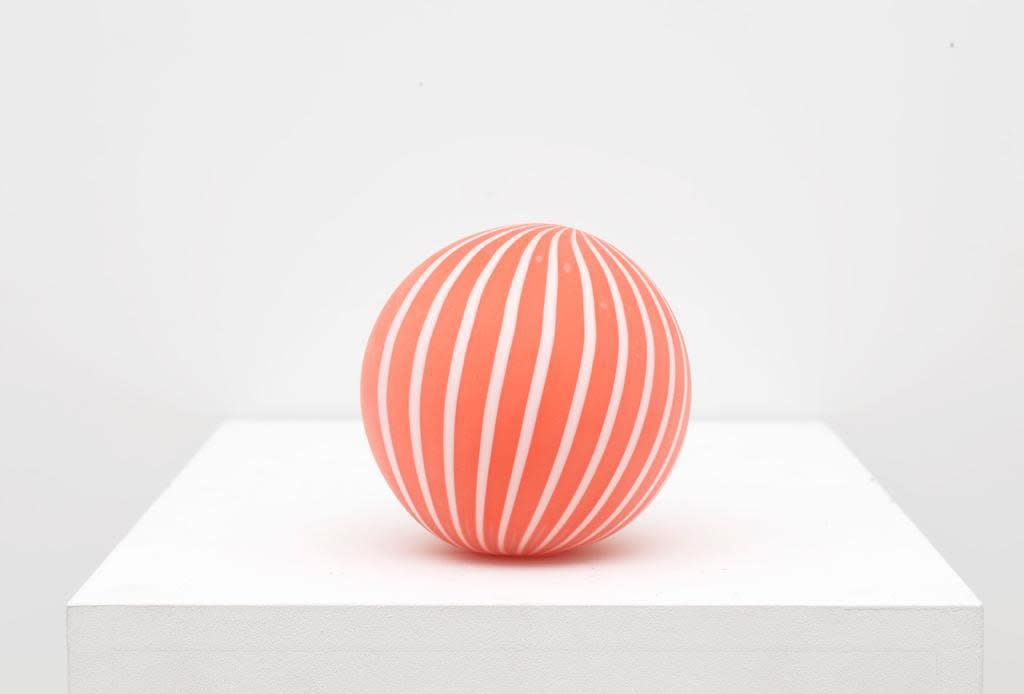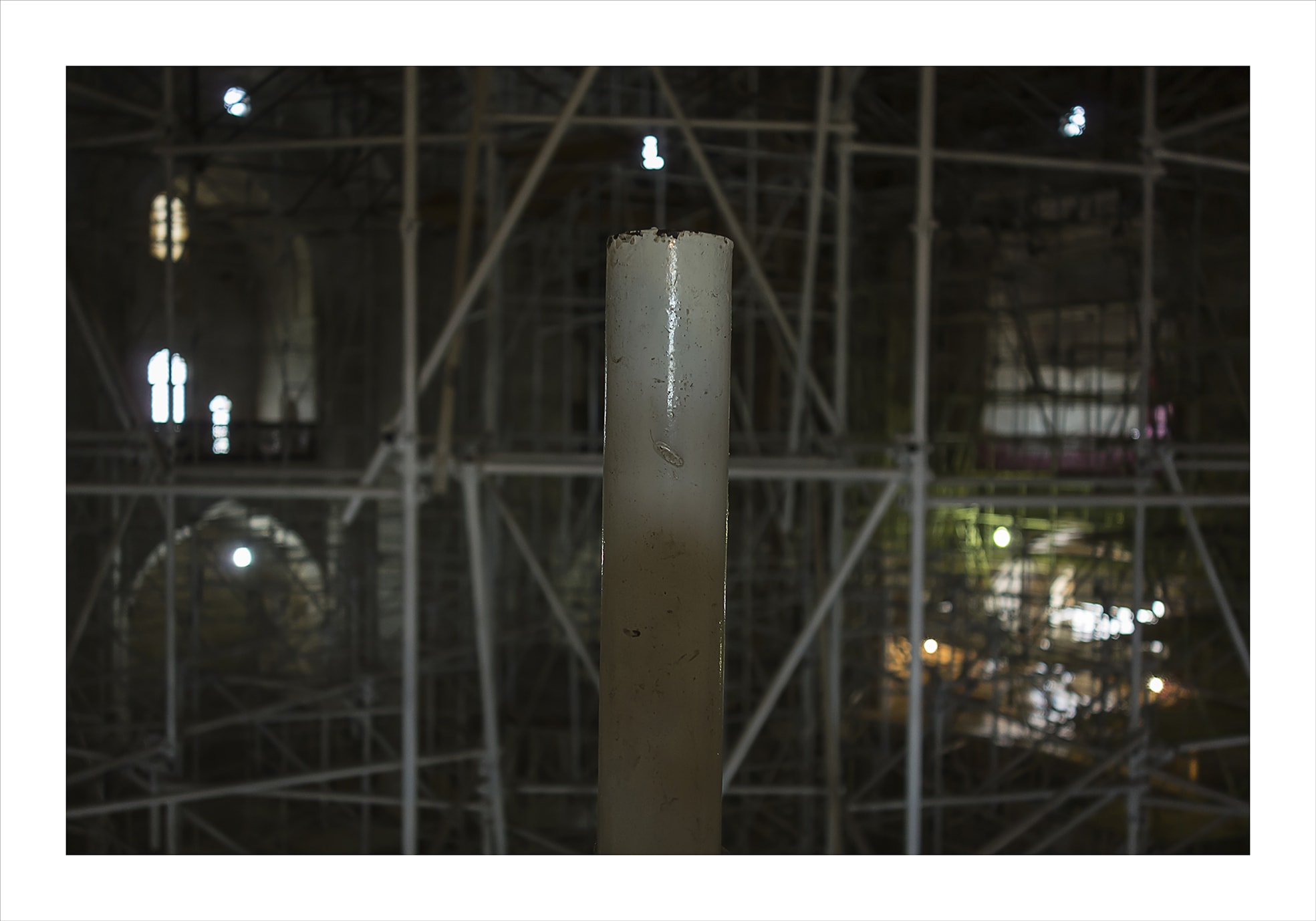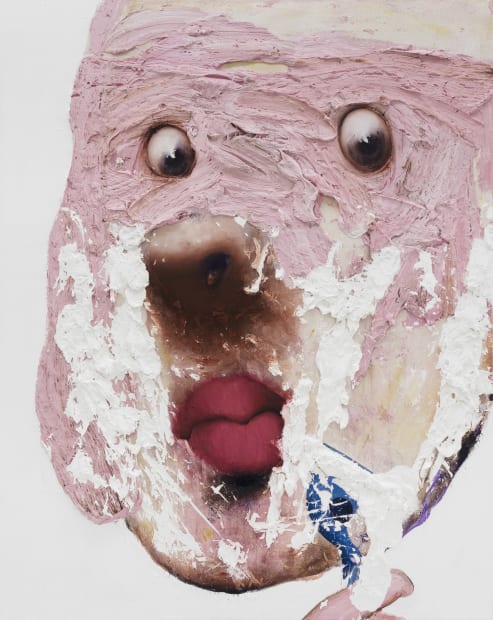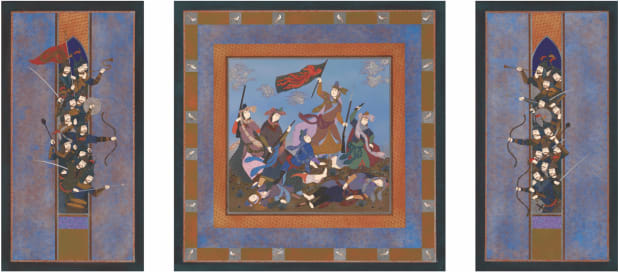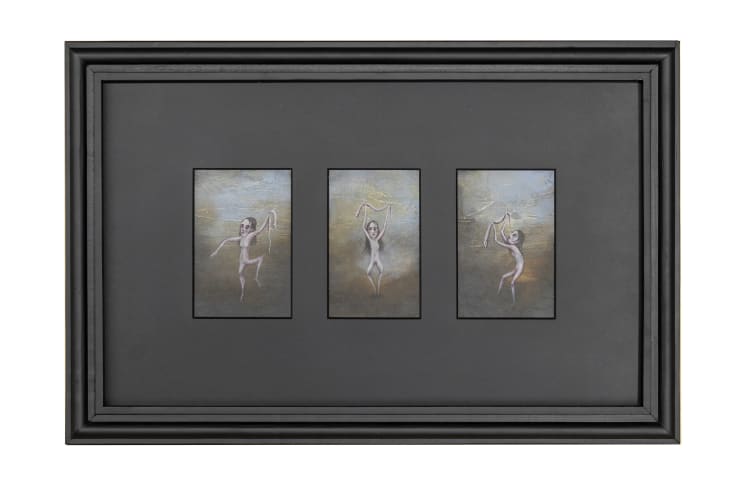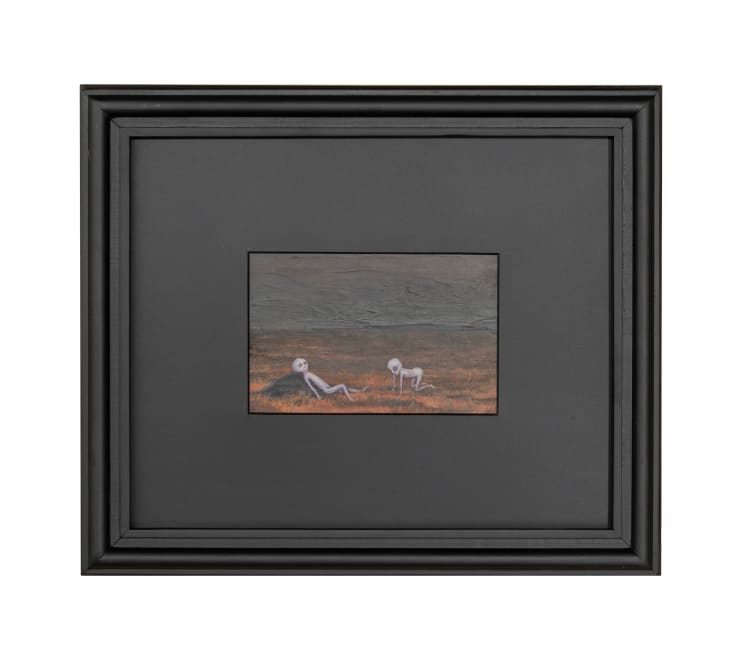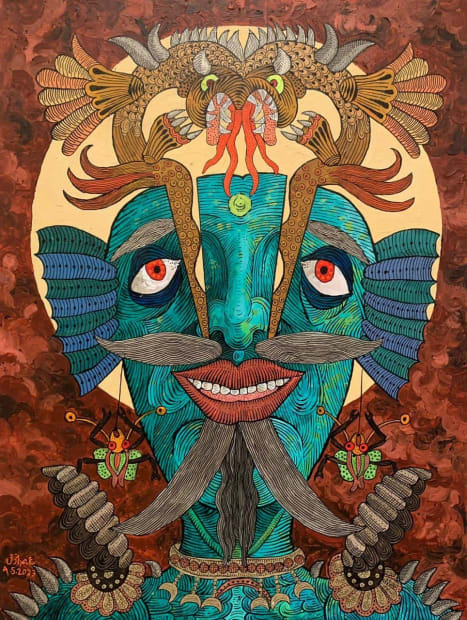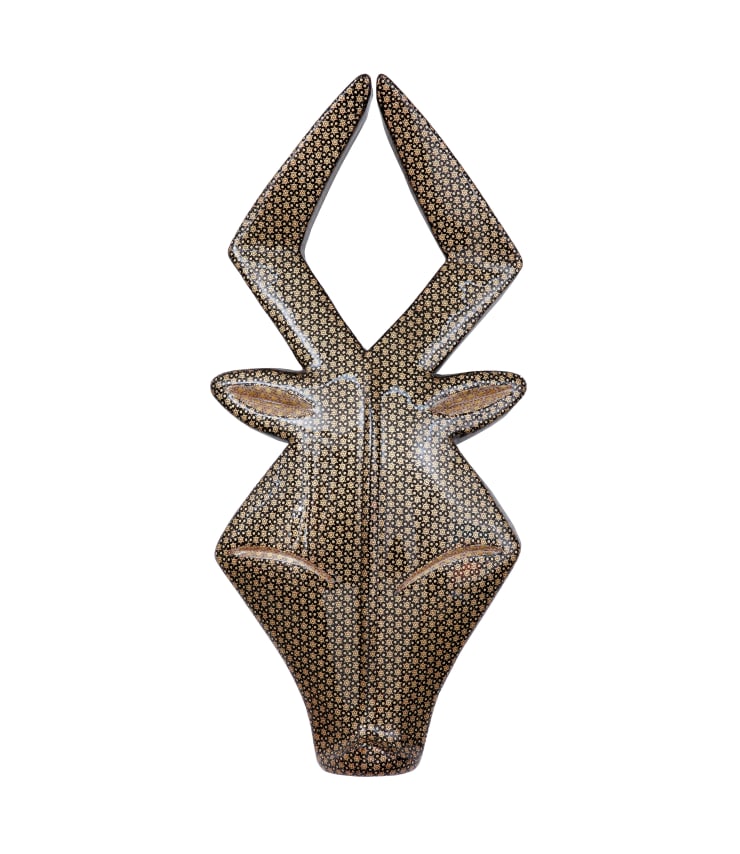-
-
The exhibition aims to present the viewer with different manifestations of ‘the real’ through a multiplicity of apertures. In instances, the physical presence of artwork offers itself as an objective reality despite possible references to its outside, crossing over mere representation through its existence as an artistic creation. In much of what is presented, the artist’s relationship with ‘the real’ has formed their perception of it and its manifestations in their work. In effect, however, the act of creating a work goes beyond the received perception to establish a reality of its own. Moreover, whether as a gesture, an objective reality, or a perceived idea of reality, the pieces in “Realism” come together to speak to an audience whose lived experience is informed by augmented and virtual reality, living in settings considered surreal three decades ago, and finger-painting a future that is at once appealing and repulsive. Dastan’s second display at Frieze No.9 Cork Street, “Realism” includes works by Kiarash Alimi, Reza Aramesh, Fereydoun Ave, Maryam Ayeen & Abbass Shahsavar, Andisheh Avini, Gohar Dashti, Homa Delvaray, Mitra Farahani, Sahand Hesamiyan, Rana Javadi, Y.Z. Kami, Ghasem Hajizadeh, Alborz Kazemi, Shohreh Mehran, Mehran Mohajer, Mehrdad Mohebali, Farhad Moshiri, Pooya Razi, Behjat Sadr, Shayan Sajadian, Sina Shiri, Soheila Sokhanvari, Newsha Tavakolian. The presentation is accompanied by works of the Ghasemi Brothers, Mohammad Hossein Gholamzadeh, Farrokh Mahdavi, Farah Ossouli, Peybak, Ali Akbar Sadeghi, and Mamali Shafahi in the Viewing Room.
-

-

-
 Oh! What a beauty!Edited by Aria KasaiPublished by Dastan & AASSTTIINN & Studio Kargah
Oh! What a beauty!Edited by Aria KasaiPublished by Dastan & AASSTTIINN & Studio Kargah -
Maryam Ayeen and Abbas Shahsavr
-
Artist's CVMaryam Ayeen (b.1985, Bojnoord, Iran) and Abbas Shahsavar (b.1983, Kermanshah, Iran) have been painting together for twelve years. Ayeen holds a BA in Painting from Ferdowsi University, Mashhad, Iran. Shahsavar holds an MA in Illustration (University of Tehran) and a BA in Painting (Ferdowsi University, Mashhad). Their work follows an old tradition in Persian miniature painting. They live, teach, and paint in the city of Mashhad, Iran.Works of Maryam Ayeen and Abbas Shahsavar deals with middle class life. They use their own personalities as model to explore the issues that take place in their lives. Their painting style is informed by the miniature tradition of Persian painting, even thought their subject matter is not.
-
Andisheh Avini
-
Andisheh Avini (b. 1974, New York) is an artist and senior director at Gagosian, New York. He uses painting, drawing, printmaking, and sculpture, often incorporating the traditional craft of marquetry in his artistic practice.Andisheh Avini explores the duality of his own identity by combining iconic images like Persian calligraphy, decorative motifs, and portraiture with occidental concepts of minimalism and abstraction. Avini's approach speaks to a larger globalized society of nomads, the displaced, and the wayfarer, reflecting a contemporary multicultural experience to which many can relate.
-

-
Homa Delvaray
-
Artist's CV
Homa Delvaray (b. 1980, Tehran, Iran) is an Iranian graphic designer and visual artist living and working in Tehran. Since earning a degree in Visual Communication from the University of Tehran (2006), she has extended her work across a variety of mediums, from installation to sculpture, textile art to artist book.
Her practice activates the overlap of graphic and stage design in a spatial framework. Her work, often presented as an installation of a group of objects, engages the architectural space using a combination of design and spatial strategies. A graphic designer by training, Delvaray employs the tools she has at her disposal to research and present what she observes as the paradoxical life within the dichotomies found in contemporary Iranian and the Persian traditions and culture. Her recent series of works investigates and how gender has been formulated in mythological metaphors and tropes. -

-
-

Sahand Hesamiyan
Emtedad, 2023Mo40 Steel, 45 Rockwell Hardness
56.8 x 7.6 x 7.6 cm
22 1/2 x 3 x 3 in
Edition of 3 -

Sahand Hesamiyan
Neshaan, 2023Mo40 Steel, 45 Rockwell Hardness
12.5 x 12.5 x 35.5 cm
5 x 5 x 14 in
12 x 12 x 23.9 cm
4 1/2 x 4 1/2 x 9 1/2 in
14.7 x 14.7 x 13.7 cm
6 x 6 x 5 1/2 in
Edition of 3
-
-
Sahand Hesamiyan (b. 1977, Tehran, Iran) received his BA in Sculpture from the University of Tehran (2007). He is a permanent member of the Iranian Sculptors Association and the director of the committee of the Iranian Sculptors Association. He has also been a member of the board of directors of the 6th Tehran Biennial of Contemporary Sculpture and a member of the jury of the 3rd Tehran Urban Sculpture Biennial. He currently lives and works in Tehran.Sahand Hesamiyan explores contemporary sculptural directions informed by Islamic and Iranian architecture. His work establish a relationship between science and geometry with hints to the abstract nature of spirituality. This intense relationship at times goes beyond the mere reflection and repetition of forms, influencing the titles of the pieces as well as the brief descriptions often accompanying them.
-

Rana Javadi
Iran Revolution٫ Police Station, Enghelab Street, Tehran, 1979Artist's CVRaana Javadi (b. 1953, Tehran) is a photographer, translator and researcher, working and living in Iran. She is a self – taught artist who had started her career as the Director of Photo and Pictorial Studies at the Cultural Research Bureau in Tehran in 1989. She is also a member of the editorial board of "Aksnameh" (a quarterly journal of photography) and from 1997 to 1999, alongside his late husband Bahman Jalali, one of the founding members of Akskhaneh-ye Shahr, the first museum of photography in Iran.In her practice, she carefully gathers and arranges historical images and objects to then capture the final photograph. In her well-known series of work, “When You Were Dying” Rana Javadi uses old photographs from some famous Iranian photographers like Bahram Chehrenegar, and then layers them with vintage fabrics, dying flowers and tarnished mirrors, creating a nostalgic tribute to a bygone era of easy living in Iran. -

-

-
Alborz Kazemi
Alborz Kazemi (b. 1989, Tehran, Iran) studied Painting at Tehran’s School of Fine Arts. After his graduation, he became more interested in photography and cinema and most of his works have been photography-based.Kazemi has worked as a video- and photo-journalist for years. As a documentarist he has lived with the belief that a photograph is a reference. Skeptical today of this referential hubris, he is now destroying and altering his negatives to reclaim emotions and experiences he feels is lost. Returning to images that he has been storing for years, he realized at some point that there is always a loss in the stutter of a photograph. The fact that a photograph flattens the world of things, its content is at the mercy of many outside forces, and finds new identity in its presentation casts doubt as to the nature of its referential status. -

Alborz Kazemi
What Happened?, 2021 -

-

Mehran Mohajer
Untitled, 2015Mehran Mohajer (b. 1964, Tehran, Iran) started photography in the 1980s. He has a BA in Photography and an MA in General Linguistics from the University of Tehran. He is a faculty member of the University of Tehran and has been teaching in various academic institutions for the past 30 years. He is a translator and author of several books on literary criticism and photography. His articles on photography have appeared mostly in "Herfeh:Honarmand" magazine.Mehran Mohajer is interested in the relationship between the camera and the act of seeing, although some of his frames point to "no-thing" ( "Scaffolding", 2020, "Between and Non-Between", 2017). He pays attention to the dynamics of the language of the camera and challenges its boundaries. -

Mehrdad Mohebali
Untitled, 2022Mehrdad Mohebali (b. 1960, Tehran) is a Tehran-based artist. He graduated in Painting from the University of Tehran (1989).In works of Mehrdad Mohebali, usually done in large format, people are excuted in a manneristic fashion. His early surreal scenes gave way to portraits of familiar political figures and scenes from art history next to those of the painter and ordinary people. His use of intense colors, lighting, and the poses of his subjects imbues his works with affectations and distortions. -

-
Courtesy of the Artist
Pooya Razi
Pooya Razi (b. 1984, Tehran, Iran) received his BA in Painting from the Tehran University of Art (2008). He is also a writer and an award-winning filmmaker.Pooya Razi's paintings emphasize the act of painting rather than the subject matter. His choice of simple and unimportant objects and figures in everyday situations challenges traditional notions of what constitutes a "worthy" subject for art. By doing so, Razi invites us to look at the world around us with fresh eyes and appreciate the beauty and complexity of everyday life. Razi's paintings also reflect his belief that it is the artist's perspective that imbues objects and subjects with meaning and importance. Rather than seeking to replicate reality exactly, Razi uses his visual language, mood, and lighting to give his subjects a unique and personal quality. This approach encourages us to question our perceptions of reality and consider how our perspectives shape our understanding of the world. -

-
-

Sina Shiri
Untitled, 2017Sina Shiri (b. 1991, Rasht, Iran) is a photographer based in Tehran. He started photography at the age of sixteen and has since worked for numerous press agencies and magazines.Sina Shiri goes against the fast nature of street photography by bringing studio lighting equipment and staging the scene. Using a camera flash, he extends the subject's presence in the quick of the moment. He glimpses at people's personal spaces within the city. -

-

Newsha Tavakolian
“Somaye” from “Blank Pages of an Iranian Photo Album” series, 2014-2015Artist's CVNewsha Tavakolian (b. 1981, Tehran, Iran) is an Iranian photojournalist and multimedia artist living and working in Tehran. Tavakolian began her career as a photojournalist at the age of 16. Since then, she has documented social and cultural issues in Iran and the region, with a particular focus on the lives of women.Newsha Tavakolian is known for her innovative approach to visual storytelling. She documents thought-provoking images that challenge traditional notions of gender, identity, and culture. In her photographs, Tavakolian captures the complex realities of contemporary Iran, offering nuanced portraits of everyday life that are both intimate and socially aware. Her images, often shot in black and white, have a raw, documentary feel that brings the viewer into the heart of the story. Tavakolian's contributions to the world of contemporary photography and art have established her as one of the leading voices of her generation. -
Viewing Room
-

-

-

-

-
Peybak
-
Peybak
Peybak (Peyman Barabadi and Babak Alebrahim Dehkordi, both b. 1984, Tehran, Iran) is the acronym of two artists working together as a "unified duo" since December 20, 2001.Peybak is well-known for depicting imaginative creatures in a dystopian reverse void. The duo works on every piece together, each taking on different parts until they both declare it finished. Persian poetry, mythology, and miniature painting inspire Peybak's works. -

-

Realism at No.9 Cork Street
Past viewing_room
Dastan presents “Realism”, an exhibition at Frieze’s No.9 Cork Street featuring the work of 24 Iranian artists. “Realism” opens on April 13th, 2023, and continues through April 29th. “Realism” examines the tension between ‘perceived reality’ and ‘real life experience’ in the work of artists who have either addressed the notion of realismin their practice or have employed it as an aesthetic strategy to formulate andexpress their lives—particularly as Iranians hold different vantage points. They substantiate their experiences, observations, and emotions through painterly marks and sculptural forms. What they present is certainly real: whether they aredepictions in realistic and realism-inspired aesthetics or emotional gestures and interpretations, they are all impressions of what is real.


